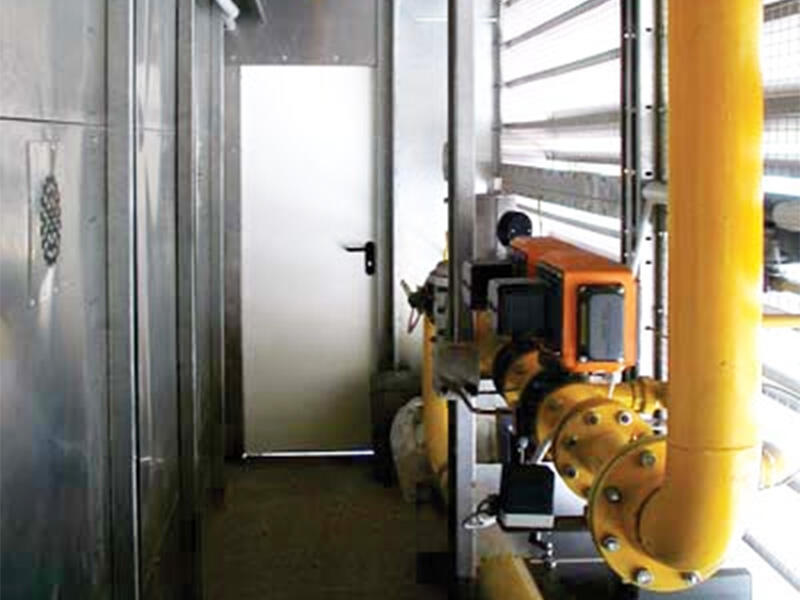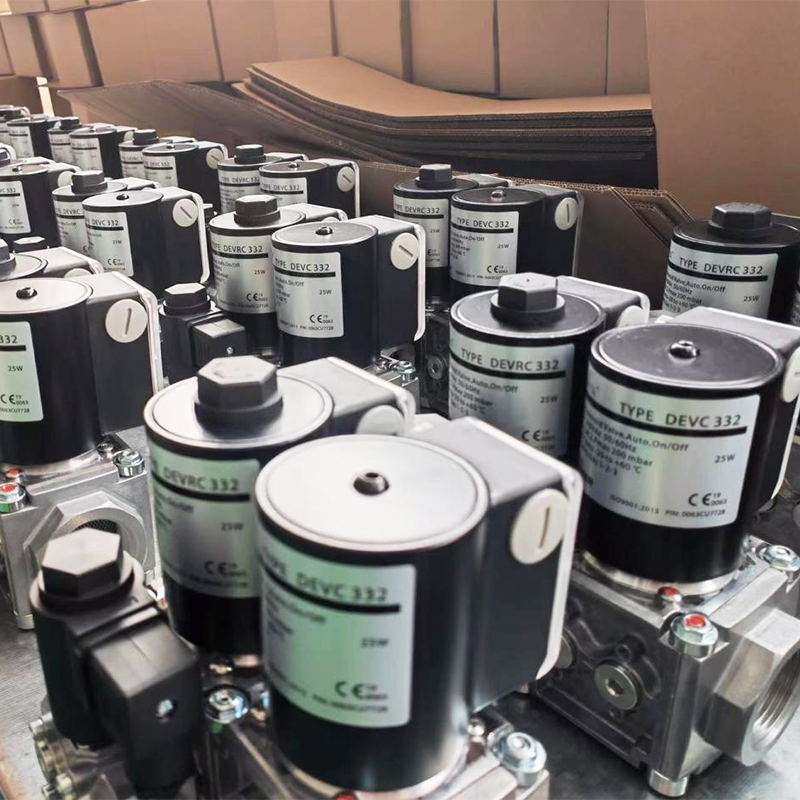Essential Tools & Materials for Gas Burner Installation
Required Safety Gear for Handling Gas Lines
Safety is of the utmost importance when working with gas lines and personal protective equipment (PPE) plays a large part. PPE is essentially goggles gloves and protective clothing to protect against any gasline related danger. The items prevent splashes, burns, and other incidents at the time of installation. Training is required on safety standards and compliance to ensure a safe workplace. These are estabished by the OSHA to guarantee gas safety and protection when integrating gas burners. Statistically there is a large number of on the job accidents in the area of gas line work, making it absolutely crucial to take steps to prevent these accidents.
Specialized Tools for Industrial Gas Burner Connections
***Special Equipment Necessary for Industrial Gas Burner Connections*** The proper tools and supplies for connecting large gas lines Many professional stoves will have a ¾ NPT (National Pipe Taper) gas connection for the oven or the burners. Torque wrenches that apply the proper amount of torque and warren pipes to grip and turn pipes, and you can check for leaks with gas line pressure testers. These devices have certain function performance in the connection with security and sealing. In addition, it need to be calibrated tools, to ensure gas tightness that eliminate leakage. Tool calibration to industry standards needs to be followed to ensure both safety and integrity. Recent technology development brought smart tools that add an extra layer of protection and an additional level of efficiency for easy industrial gas burner installation.
Pipe Compounds and Sealants for High Efficiency Systems
For your high-efficiency systems, it is vital that you select the appropriate pipe compounds and sealants. When you're dealing with a gas application that doesn't need to be frequently opened or serviced, PTFE tape or anaerobic sealants are a good solution—as long as they're working for you. Choosing high-performance pipe sealants that meet industry standards is important for preventing gas leaks, with several such items featuring certification for confidence. Applying sealants properly is crucial to achieve their maximum performance and as such must be done following best practice – something those who are experienced at installing are often keen to point out. A proper application of sealant provides a secure barrier to keep the connection sealed and prevent leaks while keeping the system running as it should.
Shutting Off Gas Supply and Prepping the Workspace
The first step in gas burner installation with regards to safety is turning off the gas. This step starts by turning the main valve off, so the flow of gas stops and any pressure in the system is released, so the lines are virtually void of gas. When the gas is definitively turned off, it’s time to prepare your working area. It's important to clear flammables and provide proper ventilation to avoid gas related accidents. What can happen is that beginners can underestimate the intricacies behind gas supply systems thinking it is a simple job. Caveats abound from experts warning about falling back on safety measures, that misuse can prove hazardous.
Securing Pipes for Commercial Gas Burner Systems
Protecting the pipes is key in installing commercial gas burner systems, not only for safety but for performance. Ensure your pipes are secure with brackets, hangers, and straps that will keep it from banging around and causing stress on the gas line connections. Local building and industry standards for installation of pipe cannot be overlooked, since it assures safety and compliance. This has been well publicised by historical accidents, where insecure pipework has been involved, which only serves to remind us of the consequences of disregarding due process when working on gas pipework, which again brings us back to the rigours of our detailed process in connection to pipework installations.
Connecting Adapters and Flex Hoses Safely
Correct choice and proper installation of adapters and flexible hoses are also very important in gas plumbing. Material strength as well as compatibility with gas systems needs to be the overriding factor in the component selection process to achieve this kind of future-proof infrastructure. Subsequent safety checks are necessary to check for leak-free connections, as prescribed in the appropriate gas connection standards. Specialists recommend periodic checking and servicing of these parts to protect safety and prevent hazards. Real-time monitoring of these connections will help you keep your system safe and is also recommended by experts in the field.
Mounting Burners with Furnace Oil Burner Standards
Gas burners are no different - and properly installing a gas burner demands precise alignment, leveling and attaching to work safely and efficiently. Today’s codes, especially for furnace oil burners, have a system that needs to be followed at time of installation. Deviation from these norms can potentially result in lower system efficiency and higher safety hazard, such as the field cases in which incorrect installation led to the degradations in system performance. Therefore the correct relationships between the axles need to be known and applied during installation if potential dangers are to be avoided and the burning performance is to be optimised.
Final Adjustments for Oil Burner Heat Exchanger Compatibility
The last step of gas burner installation is the conversion of the gas burner to be compatible with oil burner heat exchanger. Some of these parameters might need to be fine tuned, such that we find the best integration and the best cooperation between them (wife and husband) in the system. Once installed, calibration and commissioning are critical steps to ensure the performance is maximised and optimum energy efficiency is achieved. Veteran riggers solve these familiar problems here, by scrutinizing carefully and being exact. This expertise illustrates the importance of precise last touches that prevent operational errors and ensure perfect compatibility.
Post-Installation Safety Protocols
Pressure Testing for Industrial and Residential Systems
It is vital to pressure test new gas lines, as it is a safety and regulatory requirement. It is serving its purpose and fulfilling that purpose appropriately Replace That Gas Line For that purpose to be satisfied and fulfilled, you need the pressure to be low enough so that the gas line does not leak. This approach is frequently based on specific norms such as ANSI and ASME giving credit to best practices. In addition to confirming the installation is sound, pressure testing is also a good way to ensure peace of mind that the system is working as it should be. A report demonstrates that these tests can be used to dramatically reduce the occurrence of gas leaks in both industrial and residential systems.
Detecting Leaks in High Efficiency Oil Burner Connections
Leakage inspection in connections to an oil burner is an important task for safety reasons. There are a number of methods that can be used to detect leaks after installation (such as a soap solution or electronic leak detector). Immediate identification of leaks is essential, because even small leaks can result in huge dangers, according to the professional and technical studies, as well as industrial reports. Periodical checks for leaks should be part of any maintenance program to maximize system safety and system performance over the long term. This provides safety first, making secondary hazards for high efficiency oil burner systems as low as possible.
Ventilation Requirements for Commercial Applications
Good ventilation is important for the safe operation of gas burners in commercial applications. Following the codes means dangerous situations don't happen, such as carbon monoxide trapping. Insufficient air flow can lead to dangers to human safety, which is another consideration in installation and operation. In order to facilitate good operations of gas burners, TIJEH (2012b) recommends the planning of ventilation systems that either meet or exceed these categories, meaning that these systems would be able to cater to the specific needs of the commercial sector. By knowing and following such ventilation demands, you can reduce dangers and continue to have safe operating conditions.
Maintenance Tips for Long-Term Efficiency
Cleaning Burner Ports to Prevent Clogs
Cleaning the burner ports periodically is necessary to avoid becoming clogs and to keep your gas burners efficient in the long run. Cleaning your mustang burners Remove your burners and use a stiff brush or approved cleaner to clear any deposits (monthly as a minimum). Figures have shown that installing regular maintenance can increase burner efficiency by as much as 10% resulting in a corresponding reduction in energy demand and longer life of the burner. The obvious cause of clogging in the field is dirty, spidey, oil residue, but this is also easily remedied by cleaning on occasion. Clean burner ports are not only key to your safety, but they keep the heater performing like new.
Inspecting Gas Lines for Wear and Corrosion
Frequency of gas line/pipe inspection is key to safety and code regulation. Best practices encourage visual inspections and the use of gas detection equipment to detect issues. This safety precaution is to prevent leakes and to comply with regulations. According to industry studies, with the potential for fires and explosions, poor gas line maintenance can be a hazard. For instance, a study Periodic Fire Inspections conducted for The National Fire Protection Association shows that 30% of fire risk on gas appliances can be averted through thorough inspection. As such, regular check-ups are mandatory for safe operations.
Optimizing Oil Burner Heat Exchanger Performance
In order to improve the performance of an oil burner heat exchanger, periodic assessments should be made to identify where efficiency can be improved. Changes could be re-adjusted settings or replacing worn parts or pieces to guarantee good performance. According to the empirical study, it is found that a well compiled software can bring up to 10%-15% gain in the performance, while it helps to reduce the energy consumption and improve the heat dissipation. As they are one part of a good maintenance program, these performance checks should be done on a regular basis, at least yearly, and synchronized with other regular maintenance activities. This level of attention keeps your system working effectively and safely over time.
Table of Contents
-
Essential Tools & Materials for Gas Burner Installation
- Required Safety Gear for Handling Gas Lines
- Specialized Tools for Industrial Gas Burner Connections
- Pipe Compounds and Sealants for High Efficiency Systems
- Shutting Off Gas Supply and Prepping the Workspace
- Securing Pipes for Commercial Gas Burner Systems
- Connecting Adapters and Flex Hoses Safely
- Mounting Burners with Furnace Oil Burner Standards
- Final Adjustments for Oil Burner Heat Exchanger Compatibility
- Post-Installation Safety Protocols
- Maintenance Tips for Long-Term Efficiency



